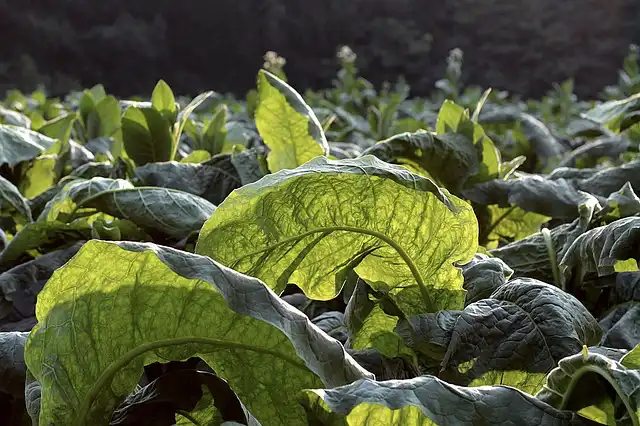Plants are not exposed to herbivores without defenses. When an insect feeds on a leaf, thereby wounding it and releasing oral secretions, a signaling cascade is elicited in the plant, usually starting with a rapid increase in the amount of the plant hormone jasmonic acid and its active isoleucine conjugate. Jasmonic acid regulates various reactions in plants, including defenses against herbivores and responses to environmental stress.
An important thesis of evolutionary theory is natural selection and the conclusion that mutants with disadvantageous properties disappear again. However, researchers at the Max Planck Institute for Chemical Ecology in Jena have made observations on the wild tobacco species Nicotiana attenuata, also known as coyote tobacco, that contradict this prediction.
Twenty years ago, the scientists conducted field trials with tobacco plants muted in their defense signals in their natural environment, the Great Basin desert in the U.S. state of Utah. These genetically modified plants attracted leaf hoppers of the genus Empoasca, which were not found on wild type plants whose defenses had not been impaired.
At the same time, the researchers observed that feeding damage by leaf hoppers could also be observed on some individuals in natural populations. They showed that natural defense mechanisms in these individual plants were compromised. However, the research team also found that other defense-impaired mutants exposed to only few herbivores in the field grew significantly faster than those with intact defense signals did.
However, in years of high herbivore pressure, the mutants were so severely attacked that they did not survive and were unable to reproduce. “These findings led us to think that natural populations of Nicotiana attenuata might contain natural mutants in the defense signaling pathway and that these mutants were maintained in natural populations by trade-offs between growth- and defense-related selection pressures,” said study leader Ian Baldwin, explaining the previous observations underlying the study.
To test this hypothesis, Ian Baldwin‘s team developed what is called a MAGIC population, which captures a large portion of the genetic diversity of the entire Nicotiana attenuata species in a breeding population with a homogenized genetic background. Creating this population required screening hundreds of natural plant accessions from seed collections at different locations in the Great Basin Desert over three decades to eventually select 26 very different parental lines that were crossed with each other in a very structured way for a decade.
The result of these crosses is the MAGIC (multi-parent advanced generation inter-cross) population. In addition, the researchers created a high-quality coherent reference genome. The research is published in the journal Proceedings of the National Academy of Sciences.
Priority of growth and reproduction over defense becomes an advantage in years with little herbivore pressure
With this data set, the scientists were able to accurately map the genetic basis of the higher susceptibility to herbivores and the variation in the levels of the jasmonic acid conjugate and locate the causative mutation in the genome.
“In Nicotiana attenuata plants, variation in the JAR gene affects how much of the jasmonic acid conjugate is accumulated. A mutation in this gene results in lower levels than in normal plants. The mutants prioritize growth and reproduction over defense, making them more susceptible to insect attack but potentially better at growing fast and producing more offspring,” says the study’s first author Rishav Ray.
In addition, the researchers demonstrated that the mutation in this single gene responsible for plant defense signaling is maintained in a population for at least 10 years, and a robust genetic network can buffer the deficit in defense, allowing the mutants to survive in nature.
Genetic mutations occur constantly and are, by and large, randomly distributed throughout genomes. Most often, these mutations are detrimental, but occasionally they are responsible for helpful traits in mutants that facilitate survival in certain environments.
In this case, as suggested in the present study, the main mutation may be part of a robust genetic network and lead to the accumulation of other mutations with large effects. This increases genetic diversity in natural populations, which is important for their long-term survival and success in the rapidly changing environments of our planet.
“With the planet’s rapidly changing climate, it is essential to understand and identify how natural processes have maintained genetic diversity so that we can find better ways of protecting and preserving the remaining biodiversity on our planet,” Ian Baldwin emphasizes the importance of the findings.
The extensive population sampling carried out 30 years ago in the Great Basin desert by the scientist, who has been investigating the survival strategies of this wild tobacco species for decades, was crucial to the success of the study. The study shows that even after many years the collection and storage of such samples can still prove valuable, and emphasizes the importance of funding such long-term research projects.
Read the paper: PNAS
Article source: Max Planck Society
Image: Tobacco plants. Credit: jimaro morales / Pixabay






